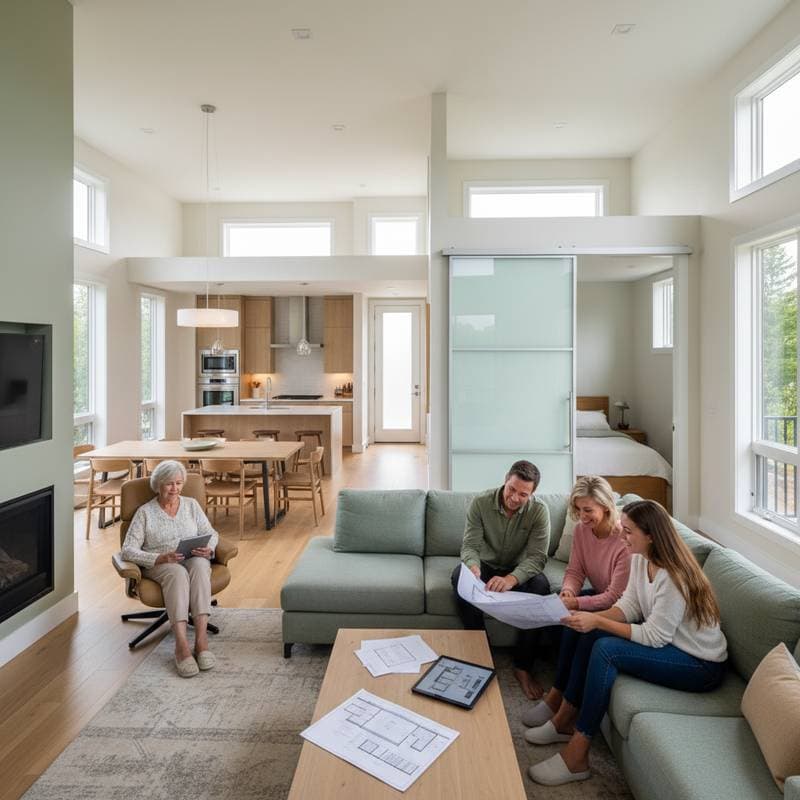2025 Flood-Proofing Costs: Elevation and Drainage Overview
Key Insights
- Elevation projects, which raise structures above flood levels, range from $40 to $140 per square foot.
- Drainage enhancements, tailored to site-specific soil and terrain, cost $3,000 to $15,000 overall.
- Integrating elevation with drainage provides comprehensive safeguards and potential insurance reductions of up to 80 percent.
- Consult local building codes and obtain an elevation certificate prior to any modifications.
Advantages and Disadvantages
Elevation
Advantages
- Lowers flood insurance premiums significantly through verified height compliance.
- Safeguards primary living areas from submersion during flood events.
- Prolongs foundation durability by minimizing water exposure.
Disadvantages
- Involves substantial initial investment.
- Demands engineering assessments and regulatory permits.
- Necessitates adjustments to entryways, utilities, and surrounding infrastructure.
Drainage
Advantages
- Offers a more affordable alternative to complete structural lifting.
- Enhances outdoor functionality and stabilizes soil conditions.
- Integrates seamlessly with aesthetic landscaping improvements.
Disadvantages
- Provides limited defense against severe flooding depths.
- Requires ongoing upkeep to maintain functionality.
- Often falls short of meeting standalone insurance or regulatory standards.
Detailed Process for Home Elevation
Essential Tools and Materials
- Hydraulic jacks for controlled lifting.
- Steel I-beams to support the structure.
- Concrete masonry units for the new foundation.
- Extensions for utilities such as plumbing and electrical.
- Protective equipment including gloves, hard hats, and eye shields.
Duration: 4 to 8 weeks.
Complexity: Advanced; requires professional expertise.
- Prepare the property. Relocate furnishings and reroute utilities. Shut off gas, water, and electrical services.
- Evaluate the foundation. Engage a structural engineer to assess cracks, bearing capacity, and soil composition.
- Position supports. Install steel beams beneath load-bearing elements and secure hydraulic jacks.
- Elevate incrementally. Raise the structure in precise increments, with teams monitoring for levelness and structural strain.
- Construct the elevated base. Erect concrete piers or masonry walls to form the permanent foundation.
- Reposition and anchor. Lower the house onto the new foundation and restore utility connections.
- Complete site restoration. Backfill voids, grade soil to direct water away, and verify drainage integration.
- Finalize approvals. Secure inspections and obtain an elevation certificate for compliance and insurance purposes.
Expert Recommendation: Document progress with photographs at each phase. These records facilitate permit verifications and support future claims.
Cost Analysis
Standard Ranges
- Elevation: $40 to $140 per square foot, varying by project scale.
- Drainage: $3,000 to $15,000 for the entire system.
Elements Increasing Expenses
- Requirements for deep pilings or crawl space adaptations.
- Unstable soil necessitating additional stabilization measures.
- Restricted access that complicates equipment deployment in high-risk flood areas.
- Elevated zones demanding greater lift heights for compliance.
Elements Reducing Expenses
- Slab-on-grade designs with unobstructed site access.
- Stable, dry soils that simplify grading tasks.
- Synergies with concurrent renovations, such as foundation reinforcements.
Scenarios Favoring Replacement Over Repair
When foundations exhibit extensive cracking or settlement, elevating onto a fresh base proves more economical than repeated repairs. Similarly, chronically failing drainage lines benefit from comprehensive replacement rather than intermittent clearing.
Ongoing Maintenance and Preventive Measures
Schedule
Conduct inspections biannually in spring and fall, or immediately following major rainfall events.
Routine Procedures
- Remove accumulated debris from gutters, downspouts, and drainage channels.
- Verify and correct grading around the foundation, replenishing soil in eroded areas.
- Apply sealants to pier bases and concrete seams as wear appears.
- Annually test sump pumps, including backup power sources.
Expected Results
These efforts ensure efficient water diversion from the structure, eliminating pooled water adjacent to walls. Proactive care preserves system efficacy and prevents expensive excavations down the line.
Complementary Strategies
Dry Floodproofing
Apply impermeable sealants and barriers to walls and access points. This method suits solid masonry constructions in low-depth flood scenarios, though it risks breaches under intense hydrostatic pressure.
Wet Floodproofing
Permit controlled water entry into non-essential spaces like basements while shielding critical components with resistant materials. Ideal for situations where lifting proves unfeasible, particularly for accessory buildings.
Site Grading and Landscaping Adjustments
Recontour the terrain to channel surface water away from the dwelling. Incorporate features like rain gardens or permeable surfaces for enhanced management. This approach excels in moderate flood risks and boosts property aesthetics.
Frequently Asked Questions
What elevation height is recommended?
Elevate at minimum one foot above the designated base flood elevation for your area. Reference official flood maps and consult the local building authority for precise requirements.
Is occupancy possible during elevation?
Occupancy is not permitted. Vacate the premises until the structure stabilizes on the new foundation and services resume.
Does flood-proofing impact insurance rates?
Affirmative; elevation often reduces premiums by 30 to 80 percent, contingent on achieved elevation relative to flood levels.
Are permits required for drainage modifications?
Generally, yes, especially when integrating with municipal systems or redirecting flows. Verify regulations prior to excavation.
Implementation Checklist
- Assess flood zone designation and procure an elevation certificate.
- Examine foundation integrity and soil conditions.
- Select optimal combination of elevation, drainage, or hybrid solutions.
- Solicit bids from at least three certified contractors.
- Allocate funds for permits, geotechnical testing, and interim accommodations.
- Schedule semiannual reviews of grading and drainage features.
- Retain documentation of enhancements to claim insurance incentives.
Securing Long-Term Protection
View flood-proofing as a strategic investment in your property's future. Define objectives clearly, from structural elevation to yard reconfiguration or drainage enhancements. Involve specialists from the outset to navigate regulations and optimize designs. Post-completion, uphold maintenance routines akin to those for roofing or heating systems, ensuring sustained performance and peace of mind.



